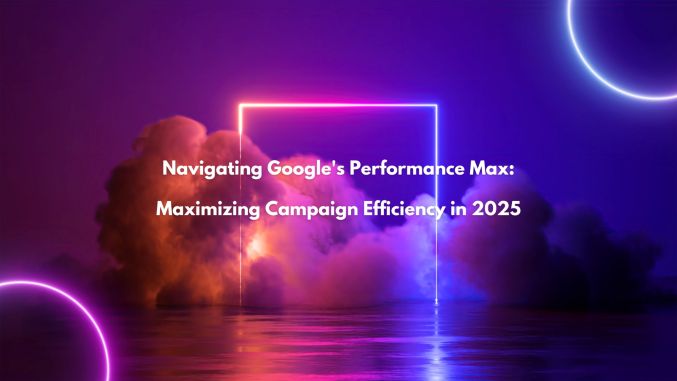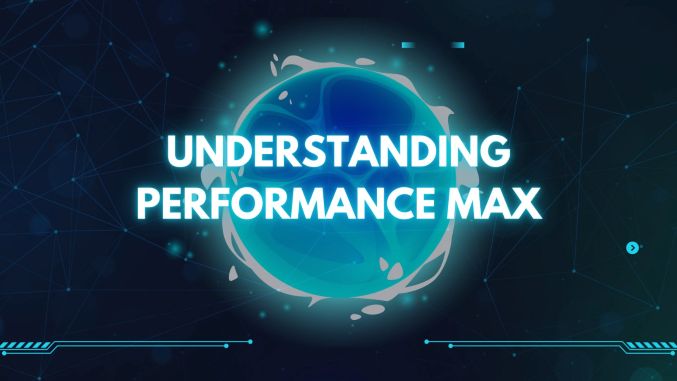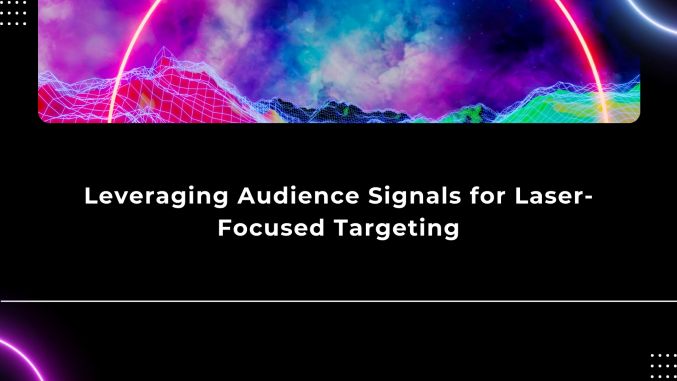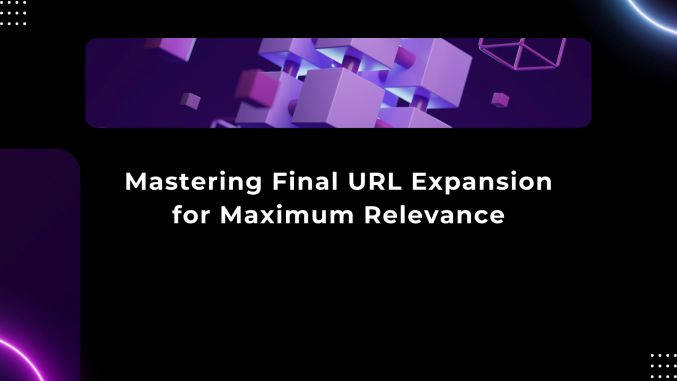Navigating Google's Performance Max: Maximizing Campaign Efficiency in 2025
1. Introduction
As the digital advertising landscape continues to innovate, Google's Performance Max campaigns have become a game-changer. Launched as an AI-powered, automated alternative, PMax utilizes machine learning for optimizing ad placement in Google Search, Display, YouTube, Discover, Gmail, and Maps, all within a single campaign.
As we approach 2025, Performance Max remains atop the list because of its capacity for maximum conversions and revenue and decreased manual work. But in order to really tap its full potential, advertisers need to know how it works and use best practices for effectiveness.
This guide will discuss how to optimize Performance Max campaigns, including everything from goal alignment and asset organization to audience signals and constant adjustment.
2. Understanding Performance Max
What is Performance Max?
Performance Max is an objective-driven campaign type that leverages Google's artificial intelligence and automation to serve ads on all of Google's inventory. You don't select placements manually like in regular campaigns, but PMax will automatically assign budget to the highest-performing channels depending on your goals.
How Does Performance Max Work?
- Machine Learning Optimization: PMax uses historical and real-time information to decide where the best ad placements are.
- Multi-Channel Reach: Ads show up on Search, Display, YouTube, Discover, Gmail, and Maps without having to create separate campaigns.
- Asset-Based Approach: Rather than single ads, you upload multiple creatives (images, videos, text, logos), and Google blends them for best performance.
Why Use Performance Max in 2025?
- Automation Efficiency: Saves you from manual bidding and placement management.
- Broader Reach: Reaches users at various touchpoints in their path.
- Improved Performance: AI optimizes for conversions or value, and they tend to outperform manual campaigns.
Major Sources for Best Practices
- Google Help (Official setup and optimization guidelines)
- DataFeedWatch (PMax Shopping campaign feed optimization)
- Seer Interactive (Sophisticated strategies for AI-driven campaigns)
3. Establishing Clear Objectives
Performance Max performs optimally when campaign objectives are clearly defined. As opposed to regular campaigns, PMax demands initial clarity on the definition of success.
Selecting the Appropriate Goal
- Sales/Conversions: Ideal for eCommerce and lead generation.
- Lead Generation: Optimizes for form fills, calls, or sign-ups.
- Website Traffic: Targets clicks (not as recommended for PMax, since it's conversion-oriented).
- Local Store Visits: Perfect for physical store businesses.
Aligning with Performance Max Features
- Conversion Tracking: Make sure Google Ads and Google Analytics 4 (GA4) are well connected.
- Value-Based Bidding: If the profit margin differs, use ROAS (Return on Ad Spend) bidding.
- Seasonal Adjustments: Modify goals in high-season times (e.g., Black Friday).
Common Mistakes to Evade
- Ambiguous Goals – PMax requires exact KPIs to optimize properly.
- Skipped Attribution – Utilize data-driven attribution to properly track performance.
- Overlapping Audiences – Make sure PMax does not overlap with other campaigns targeting the same users.
4. Optimizing Asset Groups
Because PMax is based on several creatives, asset group organization is very important.
What is an Asset Group?
An asset group is a set of creatives (images, videos, headlines, descriptions, logos) that Google mixes together to create ads.
Best Practices for Asset Groups
- Varied Creatives – Supply 5+ images, 3+ videos, more than one headline, and descriptions.
- High-Quality Media – Comply with Google's recommendation on resolution and aspect ratio.
- Brand Consistency – Keep logos and messages in line with brand tone.
- Responsive Elements – Leverage automated extensions (sitelinks, callouts) to enhance reach.
Organizing Asset Groups for Varied Objectives
- E-commerce: Emphasize product images, demo videos, and promotion text.
- Lead Generation: Employ testimonials, explainer videos, and compelling CTAs.
- Local Businesses: Include location-specific assets (store images, Maps integration).
Sources for Asset Optimization
- DataFeedWatch (For product feed optimization)
- Seer Interactive (Creative best practices for AI campaigns)
5. Leveraging Audience Signals for Laser-Focused Targeting
The Science of Audience Signals in Performance Max
The machine learning algorithms of Performance Max live on rich data feeds. Audience signals are essential training data that enables Google's AI to know your target customer profile with unparalleled accuracy. Unlike other targeting strategies, they do not limit reach but instead steer the algorithm towards your most profitable opportunities.
Advanced Audience Segmentation Techniques
- Predictive Audience Modeling
- Merge first-party customer information with Google's predictive analytics to uncover lookalike audiences
- Apply value-based audience segments (platinum/gold/silver customers) for bid optimization
- Apply offline conversion tracking to feed real-world purchase data into the algorithm
- Dynamic Remarketing with a Twist
- Build intelligent remarketing lists that change according to:
- Time elapsed since last visit (0-7 days vs 8-30 days)
- Pages visited (product category vs checkout page)
- Level of engagement (time spent on site, video watching)
- Apply exclusion audiences for:
- Recent converters
- Unqualified leads
- Competitor employees (via company exclusion lists)
- Build intelligent remarketing lists that change according to:
- Seasonal Audience Adjustments
- Construct holiday-targeted audience clusters
- Build urgency-driven segments for flash sales
- Craft geographic-specific signals for regional deals
Proven Tactics for Audience Signal Success
- The 30-60-90 Day Rule: Refresh audience lists every 30 days for remarketing, 60 days for customer match, and 90 days for lookalikes
- Signal Stacking: Stack minimum 3 audience types for best machine learning
- Performance Grading: Quality score different audience sources based on past conversion history
Real-World Case Study
An e-commerce brand grew ROAS by 137% by applying a tiered audience signal strategy along with seasonal triggers during holiday shopping seasons.
6. Mastering Final URL Expansion for Maximum Relevance
The Psychology Behind URL Expansion
Google's Final URL Expansion technology is meant to align user intent with the most appropriate page on your site. This AI-powered feature examines:
- Search query context
- User browsing history
- Page content relevance
- Conversion probability
Strategic Implementation Framework
- For wide brand awareness campaigns
- When conducting sitewide promotions
- For product categories with rich inventory
- When testing new market segments
- When conducting compliance-sensitive promotions
- For time-sensitive promotions
- When employing dedicated tracking parameters
- For high-value conversion pages
Advanced Control Techniques
- Precision Exclusion Strategies
- Apply page-level exclusion rules
- Install URL pattern blocks (e.g., /blog/, /careers/)
- Establish dynamic exclusion rules on:
- Page conversion rates
- Bounce rate thresholds
- Average order values
- Smart URL Tagging Systems
- Establish a UTM parameter framework compatible with URL expansion
- Deploy server-side tracking of expanded URLs
- Establish redirect rules for tracking expanded URLs
- Performance Monitoring Dashboard
- Construct a custom report tracking:
- Top expanded URLs by conversion rate
- Revenue per expanded page
- Session quality metrics by destination
- Construct a custom report tracking:
Pro Tip: Implement a URL expansion tracking system using Google Tag Manager that notifies you when new pages begin getting significant traffic.
7. Strategic Negative Keyword Implementation
The Hidden Power of Negatives in PMax
Although Performance Max does not support positive keyword targeting, negative keywords are still one of the most effective campaign fine-tuning tools available. When implemented correctly, they can:
- Cut wasted spend by up to 40%
- Increase conversion rates by 25%+
- Increase overall campaign efficiency
Advanced Negative Keyword Strategies
- The Tiered Negative Strategy
- Level 1: Brand protection (competitors, trademark terms)
- Level 2: Qualification filters (free, cheap, discount)
- Level 3: Intent blockers (jobs, reviews, how to)
- Level 4: Content exclusions (blog, articles, videos)
- Dynamic Negative Keyword Management
- Apply automated rules to:
- Add negatives for queries with >100 impressions and 0 conversions
- Remove underperforming negatives quarterly
- Tune match types by performance
- Apply automated rules to:
- Competitive Intelligence Integration
- Leverage third-party tools to spot:
- Competitor keywords bleeding into your traffic
- Emerging irrelevant trends in your area
- Seasonal query variations to rule out
- Leverage third-party tools to spot:
- The Negative Keyword Expansion Technique
- Begin with exact match negatives
- Expand incrementally to phrase match
- Ultimately apply broad match modified
- Ongoing monitoring of search term reports
Data-Driven Insight
High-performing PMax campaigns have between 50-100 negative keywords, with monthly reviews and tweaks.
8. Next-Level Campaign Monitoring & Optimization
The Performance Max Health Check Framework
- Daily Monitoring Essentials
- Budget pacing alerts
- Conversion anomaly detection
- Asset disapproval notifications
- Weekly Optimization Routines
- Search term report analysis
- Asset performance review
- Audience signal adjustments
- Negative keyword updates
- Monthly Deep Dives
- Full funnel attribution analysis
- Cross-campaign cannibalization checks
- Seasonality pattern recognition
- Competitive benchmark comparisons
Advanced Diagnostic Tools
- The PMax Quality Scorecard
- Machine learning confidence score
- Asset diversity rating
- Audience signal strength
- Conversion path efficiency
- Custom Attribution Models
- Implement data-driven attribution
- Compare against last-click models
- Analyze assisted conversions
- The Profitability Matrix
- Product-level ROAS analysis
- Customer lifetime value integration
- Margin-aware bidding strategies
Automation & AI Enhancements
- Implement smart bidding rules
- Set up predictive alerts
- Utilize natural language reporting
- Leverage generative AI for insights
Proven Optimization Framework
Brands using this structured methodology achieve 2-3x campaign efficiency gain in 90 days.
9. Future-Proof PMax Strategy
2025 Performance Max Trends
- Voice search optimization
- Visual search integration
- AI-generated creative variations
- Predictive customer journey modeling
- Automated A/B testing at scale
Building Your Optimization Roadmap
- Quarter 1: Foundation & Automation
- Quarter 2: Advanced Audience Development
- Quarter 3: Cross-Channel Integration
- Quarter 4: Predictive Optimization
Your Performance Max Success Kit
- Download our PMax audit checklist
- Access our asset creation templates
- Get our negative keyword starter list
- Schedule a free campaign review
Let Indian Online Marketing Transform Your Google Ads Performance!
Our certified PMax team has assisted brands in growing conversion value by 300% while lowering customer acquisition costs by 40%.
Ready to own your market with Performance Max?
Book Your Free Strategy Session Today
Call Us: +91- 9759923706
Email: [email protected]
Which PMax challenge would you like us to approach in our next guide? Comment below!






Comments
No Comments To Display